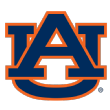The 2019 Final Four is set: Auburn, Michigan State, Texas Tech and Virginia.
By this point, we all know how each team got to the Final Four. But what about taking it a step further: How was each team built?
Below we take a look at the contributors for all four teams, and a wide-lens view of how each group was constructed.

Auburn Tigers
ESPN 100 HS recruits: Jared Harper (No. 96), Horace Spencer (No. 61), Danjel Purifoy (No. 66), Austin Wiley (No. 17), Chuma Okeke (No. 50)*
Transfers: Malik Dunbar (College of Central Florida JC), Samir Doughty (VCU), J'Von McCormick (Lee College JC)
Others: Bryce Brown (three-star), Anfernee McLemore (four-star)
*Okeke tore his ACL in the Sweet 16 and won't play in the Final Four.
One can trace Auburn's deep and talented roster back to its 2015 recruiting class -- which, not so coincidentally, was Bruce Pearl's first full recruiting class in charge. Pearl was hired in the spring of 2014 to replace Tony Barbee, but he still had several months remaining on his three-year NCAA show-cause penalty when he joined the Tigers.
The show-cause penalty expired at 12:01 a.m. on the morning of Aug. 24, 2014, and that marked the start of a five-year run that resulted in the first Final Four appearance for Auburn.
Fewer than 24 hours before Pearl's show-cause expired, ESPN 100 forward Danjel Purifoy committed to the Tigers. And the minute the show-cause ended, ESPN 100 big man Horace Spencer arrived on campus for an unofficial visit. Purifoy and Spencer ended up being the key pieces in Pearl's 2015 class, a group that also included current star guard Bryce Brown.
The other star member of the backcourt, Jared Harper, also was an unheralded member of an Auburn recruiting class. The year after Pearl landed Purifoy and Spencer, he went out and got five-stars Mustapha Heron and Austin Wiley, the latter of whom would reclassify and enroll at Auburn in December 2016.
It's Harper who has carried Auburn at times this season, but he was overshadowed in the Tigers' 2016 class ... mostly because he was overshadowed at the high school level. Auburn did its work early on Harper, getting him to commit in March 2015, months before his true breakout performance. Harper helped carry his Georgia Stars team to the Nike EYBL championship that June, playing alongside the likes of Wendell Carter (Duke/NBA), Udoka Azubuike (Kansas), Brandon Robinson (North Carolina) and Trent Forrest (Florida State).
Pearl has actually seen several players transfer or decommit -- Heron left for St. John's, Davion Mitchell headed to Baylor and EJ Montgomery ended up at Kentucky -- but his stockpiling of talent starting in 2015 was one of the bigger storylines in the recruiting world. And we're now seeing it pay off.

Michigan State Spartans
ESPN 100 HS recruits: Joshua Langford (No. 19)*, Cassius Winston (No. 31), Nick Ward (No. 39), Matt McQuaid (No. 69), Xavier Tillman (No. 74), Gabe Brown (No. 87), Foster Loyer (No. 71)
Transfers: None
Others: Kenny Goins (not ranked), Kyle Ahrens (four-star)*, Aaron Henry (four-star)
*Langford suffered a left foot injury in December and won't play in the Final Four. Ahrens suffered an ankle injury March 17 and won't play in the Final Four.
There will be thousands of words written referencing how this season was perhaps Tom Izzo's best job as a head coach, how he was able to survive multiple injuries to get the Spartans to the Final Four. And those words won't necessarily be wrong, but this team also had more talent than it's given credit for. Of the four recruiting classes that made up this season's team, all four were ranked in the top 20.
Michigan State's 2016 recruiting class was the key -- and it also was the best recruiting class the Spartans have had since the ESPN recruiting database began in 2007. On paper, Miles Bridges was the big name, as Izzo beat out Kentucky and Indiana for him, and he also left after two years for the NBA. But the rest of that top-three group included Cassius Winston, Josh Langford and Nick Ward. Langford, of course, hasn't played in three months after suffering a season-ending ankle injury, and Ward has been hampered by injuries for most of the past month. But Winston, the All-America point guard, also came in the class, and without him, Michigan State isn't in Minneapolis.
Michigan State had made Winston, a Detroit native, a priority since his freshman year in high school. He was close with Bridges and played alongside him on The Family grassroots program. Langford and Ward had committed first, then Winston pledged in September 2015 and Bridges announced a few weeks later. Izzo hoped the last piece of that class would be elite recruit Josh Jackson, also Michigan native, but he ended up playing at Kansas.
While Izzo did land star power in Bridges and Jaren Jackson over the past four years, they were both gone after last season. Though talented, this season's team wasn't built on lottery picks. Izzo landed his usual collection of Michigan State-type players: hard-nosed, tough, winners. He beat out Purdue and Marquette for in-state prospect Xavier Tillman; poached onetime SMU commit Matt McQuaid out of Texas; and loaded up early in the 2018 class on Midwest prospects, getting all five players committed two months before the early signing period.
Aaron Henry has made the biggest impact of the five -- and he was the least heralded. Henry didn't have a single high-major offer heading into the summer before his senior year, but boosted his stock during the month of July. He ended up choosing Michigan State over a quartet of Big Ten and Big East programs.

Texas Tech Red Raiders
ESPN 100 HS recruits: None
Transfers: Matt Mooney (South Dakota graduate), Tariq Owens (St. John's graduate), Brandone Francis (Florida), Deshawn Corprew (South Plains JC)
Others: Jarrett Culver (three-star), Davide Moretti (not ranked), Norense Odiase (not ranked), Kyler Edwards (four-star)
Nothing was straightforward about head coach Chris Beard's path to the Final Four and, similarly, there was nothing straightforward about how he built the Red Raiders' current roster. There's a combination of leftovers from Tubby Smith's regime, graduate transfers, junior college transfers, players from overseas and freshmen.
Beard is used to quick rebuilds. He never spent more than two seasons at any of his pre-Texas Tech stops, whether it was a junior college, a non-Division-I program, a semipro team or even Little Rock. As a result, we shouldn't have been so surprised at Beard's ability to replace four seniors and first-round NBA draft pick Zhaire Smith off last season's team.
The key heading into last offseason was graduate transfers, and Beard secured two of the better ones on the market in former South Dakota guard Matt Mooney and former St. John's big man Tariq Owens. Tech beat out Northwestern and Creighton for Mooney, and surprisingly landed Owens ahead of Maryland. Beard also reached back into his days at Little Rock to attract Deshawn Corprew, who committed to the Trojans back in 2015 before getting a release and going to junior college.
But it wasn't all newcomers. Jarrett Culver, who is now seen as a top-10 draft pick, was a top-100-caliber player for a stretch of his high school career, but was hurt for his final AAU summer and fell out of the rankings. High-majors that were once involved backed off, and the Lubbock native ended up staying home with the Raiders. Tech brought over sophomore shooter Davide Moretti from Italy in the spring of 2017, and landed former Florida guard Brandone Francis as one of Beard's first pledges after taking over in Lubbock.
And here might be the best story: Starting center Norense Odiase originally committed to Texas Tech in March 2014, when Beard was still at Division II Angelo State and more than two years before Smith left for Memphis.
One interesting thing to note is that the commitment of freshman Khavon Moore to Texas Tech in February 2018 was considered a massive coup for the Red Raiders. He was the highest-ranked prospect to commit to Tech since the ESPN recruiting database began in 2007 and the first ESPN 100 prospect since D'walyn Roberts in 2007. Due to injuries, however, Moore has played only two minutes all season.

Virginia Cavaliers
ESPN 100 HS recruits: Kyle Guy (No. 27), Ty Jerome (No. 43), De'Andre Hunter (No. 72), Mamadi Diakite (No. 37), Jay Huff (No. 73)
Transfers: Braxton Key (Alabama)
Others: Kihei Clark (three-star), Jack Salt (not ranked)
Tony Bennett's 2016 recruiting class changed everything for the Cavaliers and is at the heart of this season's Final Four group.
The backcourt tandem of Ty Jerome and Kyle Guy is the heartbeat of Virginia, so it should come as no surprise to see that Jerome and Guy got the ball rolling back in 2014. Bennett already had developed a reputation for getting his work done early on the recruiting trail, and he made quick work of his future backcourt. Jerome saw his stock rise that summer and was made a priority recruit by the Cavaliers, ultimately committing to Bennett's program before his junior year began. Six weeks later, Guy joined him. He too had a big summer on the grassroots circuit, and Midwest schools from the Big Ten and Big East were in the mix. Then he visited Virginia -- and committed one day later.
Bennett worked on the frontcourt next, getting Jay Huff and then beating out Villanova and others for De'Andre Hunter, Bennett's third ESPN 100 commitment of the 2016 class. Hunter and Huff would both end up redshirting, another trend that had been developing for Bennett. Mamadi Diakite redshirted the 2015-16 season, while Jack Salt, the lone senior on this season's team, sat out in 2014-15.
Perhaps the best recruiting story belongs to the player who, in the words of Jerome, made the "play of the century" on Saturday, freshman guard Kihei Clark. Clark, who was 5-foot-9 and 145 pounds, had committed to UC Davis in May 2017 after a solid if unspectacular spring with the Oakland Soldiers on the Nike EYBL circuit. At the Nike Peach Jam in July, Clark continued to be just that: solid.
And then came bracket play, and Clark's career was never the same. He averaged 16.0 points and 3.0 assists, shooting 50 percent from 3-point range, while leading the Soldiers to a Peach Jam title. Clark decommitted from UC Davis one month later, Virginia offered after a few weeks and Clark committed to the Cavaliers in early October.
